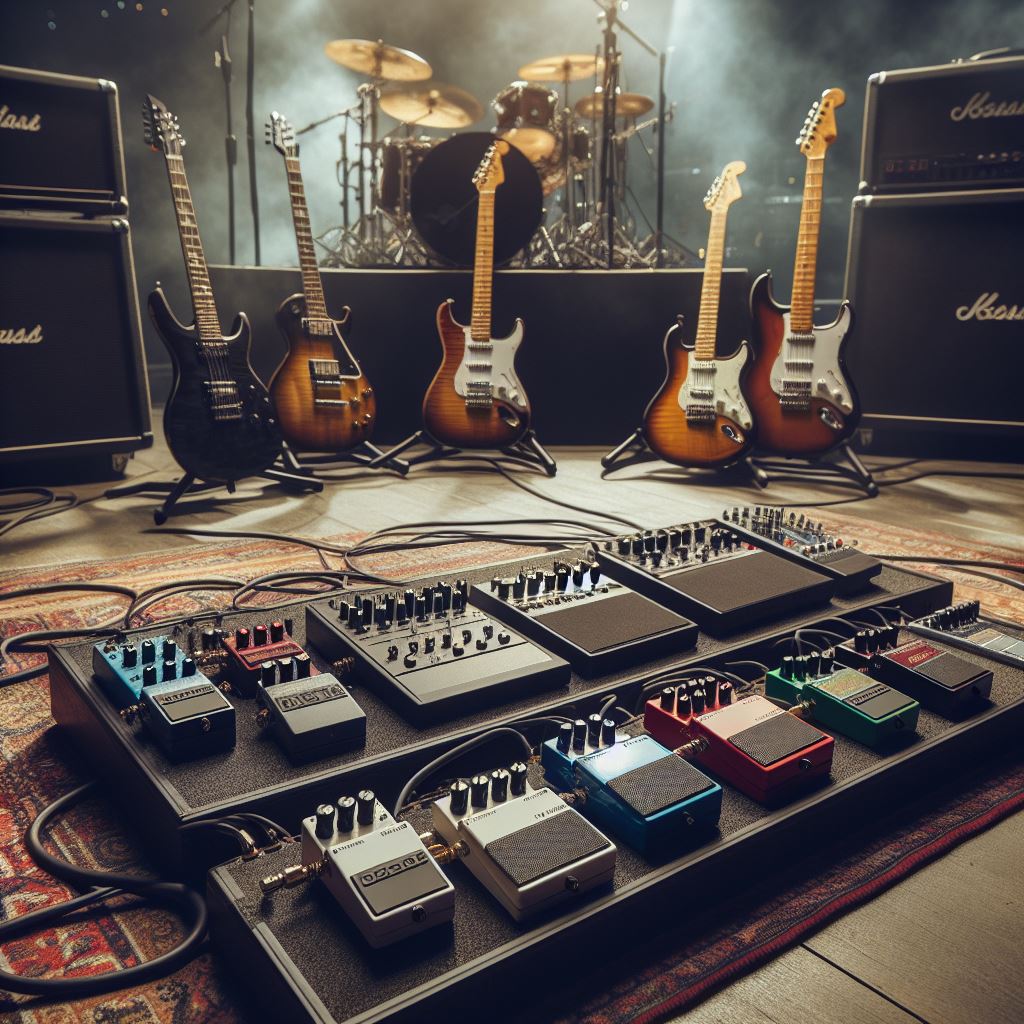Welcome to our comprehensive guide on how to choose an acoustic guitar for beginners. Whether you are just starting your musical journey or looking to upgrade from a basic model, selecting the right acoustic guitar can be a daunting task. With a wide variety of options available, making an informed decision can feel overwhelming. But don’t worry, we are here to help!
In this guide, we will walk you through the essential factors to consider when choosing an acoustic guitar. From understanding different guitar types to considering your budget, we will cover everything you need to know to make the right choice. By the end of this article, you will have a clear understanding of what to look for in an acoustic guitar, ensuring that your investment is both wise and enjoyable.
Ready to dive in? Let’s get started on this exciting journey to find the perfect acoustic guitar for you. And remember, for more in-depth reviews and tips, subscribe to my YouTube channel for all the latest updates and content!
Understanding Acoustic Guitar Types

When it comes to how to choose an acoustic guitar for beginners, understanding the different types of guitars available is crucial. Acoustic guitars come in various shapes and sizes, each offering unique tonal qualities and playability. Here are the most common types you should be aware of:
- Dreadnought: Known for its bold sound and powerful projection, the dreadnought is a popular choice for many guitarists. It offers a balanced tone suitable for a wide range of musical styles.
- Concert: Slightly smaller than the dreadnought, the concert guitar provides a more focused sound. It’s ideal for fingerstyle playing and offers a comfortable fit for smaller hands.
- Jumbo: As the name suggests, jumbo guitars are large and produce a deep, resonant tone. They are perfect for players who want a big sound with strong bass response.
- Parlor: These guitars are smaller and more portable, making them great for travel. Parlor guitars have a distinct, intimate sound and are often used for blues and folk music.
- Classical: Featuring nylon strings, classical guitars offer a softer, mellow tone. They are typically used for classical, flamenco, and fingerstyle music.
Each type of acoustic guitar has its own set of characteristics, so it’s important to try out different models to see which one feels and sounds the best to you. Understanding these options will help you make a more informed decision when selecting your first acoustic guitar.
Setting a Realistic Budget
One of the most important steps in how to choose an acoustic guitar for beginners is setting a realistic budget. Your budget will significantly influence the quality and features of the guitar you can purchase. Here are some key considerations to help you set a practical budget:
Determine Your Price Range: Acoustic guitars can vary widely in price, from under $100 to several thousand dollars. For beginners, a good starting point is usually between $100 and $500. This range offers a decent balance between quality and affordability.
Consider Additional Costs: Remember that the cost of the guitar is not the only expense. You will also need to budget for accessories such as a gig bag or case, tuner, picks, and possibly a strap or stand. Additionally, you might want to invest in a few lessons to get started on the right foot.
Evaluate Quality vs. Affordability: While it might be tempting to go for the cheapest option, it’s important to consider the quality of the instrument. A poorly made guitar can be frustrating to play and may not stay in tune, which can discourage beginners. Look for reputable brands and read reviews to ensure you’re getting a good-quality instrument within your budget.
Second-Hand Options: Don’t overlook the potential of buying a used guitar. Many well-maintained second-hand guitars can offer excellent value for money. Check local music stores, online marketplaces, and forums for good deals.
By setting a realistic budget and considering these factors, you’ll be better equipped to find an acoustic guitar that meets your needs without breaking the bank. The right investment will enhance your learning experience and keep you motivated to play.
Essential Features to Consider

When learning how to choose an acoustic guitar for beginners, understanding the essential features to consider is crucial. These features will impact the playability, sound, and overall experience of your guitar. Here are some key aspects to keep in mind:
Body Style: Acoustic guitars come in various body styles such as dreadnought, concert, and jumbo, each offering different tonal qualities and comfort levels. For beginners, a concert or dreadnought body style is often recommended due to their balanced sound and manageable size.
Wood Type: The type of wood used in the construction of the guitar significantly influences its sound. Common woods include spruce, mahogany, and cedar. Spruce is known for its bright and clear tone, while mahogany produces a warmer sound. Cedar is softer and offers a mellow tone. It’s essential to choose a wood type that matches your musical preference.
Neck Profile and Scale Length: The neck profile affects the comfort and playability of the guitar. Beginners might find a thinner neck profile easier to handle. The scale length, which is the distance between the nut and the saddle, also impacts the tension and playability of the strings. A shorter scale length generally means less tension and easier fretting.
String Action: String action refers to the height of the strings above the fretboard. Lower action is often easier for beginners as it requires less finger pressure to press the strings down. However, too low action can result in buzzing, so finding a balance is key.
Tuners and Bridge: Reliable tuners are essential for keeping your guitar in tune. Look for guitars with quality tuning machines to ensure stability. The bridge, which anchors the strings to the body, also plays a role in the guitar’s intonation and overall sound. A well-constructed bridge will contribute to better tone and sustain.
By paying attention to these essential features, you’ll be able to choose an acoustic guitar that not only sounds great but also feels comfortable and encourages you to practice regularly.
Trying Before You Buy

One of the most critical steps in how to choose an acoustic guitar for beginners is trying the guitar before you buy it. This hands-on approach allows you to feel the instrument’s playability, hear its sound, and ensure it’s a good fit for you. Here’s what you should focus on during your trial:
Comfort and Feel: When you first pick up the guitar, assess how it feels in your hands. Is the neck comfortable to hold? Can you easily reach all the frets? The guitar should feel like an extension of your body, making it easy to play for extended periods.
Sound Quality: Strum a few chords and pluck some single notes to hear the guitar’s tonal characteristics. Listen for clarity, resonance, and sustain. Different body styles and wood types will produce distinct sounds, so it’s important to choose one that matches your musical style and preferences.
Playability: Check the action of the guitar – the distance between the strings and the fretboard. It should be low enough to make playing easy but not so low that it causes buzzing. Also, test the fretboard for any dead spots or uneven frets that could affect your playing experience.
Intonation: Play chords up and down the neck to ensure the guitar stays in tune across all positions. Poor intonation can make even the most straightforward songs sound off, so this is a critical feature to evaluate.
Tuning Stability: Tune the guitar and play it for a while, then check if it stays in tune. Reliable tuning machines are essential, especially for beginners who might not have the experience to keep adjusting the tuning frequently.
By thoroughly trying out different guitars, you’ll gain a better understanding of what suits you best. Don’t hesitate to spend time in the store or ask for advice from experienced players or store staff. This hands-on experience is invaluable in ensuring you make an informed decision and choose a guitar that you’ll love to play.
Final Tips for Beginner Guitarists

As you embark on your journey of learning how to choose an acoustic guitar for beginners, here are some final tips to keep in mind:
Start with a Budget: Set a realistic budget that you are comfortable with. While it’s tempting to go for the cheapest option, investing a bit more can often get you a significantly better instrument that will be more enjoyable to play and last longer.
Focus on Essentials: As a beginner, you don’t need all the bells and whistles. Look for a guitar that covers the basics well – good sound, comfortable playability, and reliable build quality. Extras can always be added later as you progress.
Consider a Starter Kit: Many brands offer starter kits that include the guitar, a tuner, picks, a strap, and other accessories. These can be a great way to get everything you need to start playing right out of the box.
Get Professional Advice: Don’t hesitate to ask for help. Whether it’s from a knowledgeable friend, a music teacher, or a staff member at a guitar store, professional advice can steer you toward the right choice and help you avoid common pitfalls.
Stay Patient and Persistent: Learning to play the guitar is a journey that takes time and effort. Don’t be discouraged by initial challenges. With patience and consistent practice, you’ll see progress and start enjoying the music you create.
Remember, the right guitar can be a source of inspiration and motivation. Take your time to find an instrument that feels right for you and supports your musical goals. Once you’ve made your choice, dive into learning and exploring the world of music.
For more tips and detailed reviews on guitars and gear, subscribe to my YouTube channel to stay updated with the latest content!

